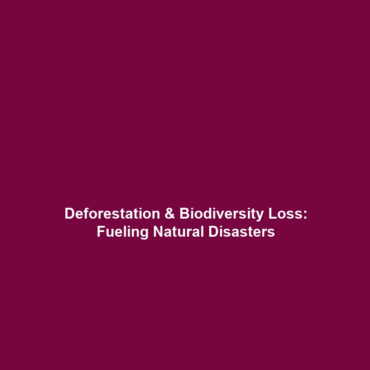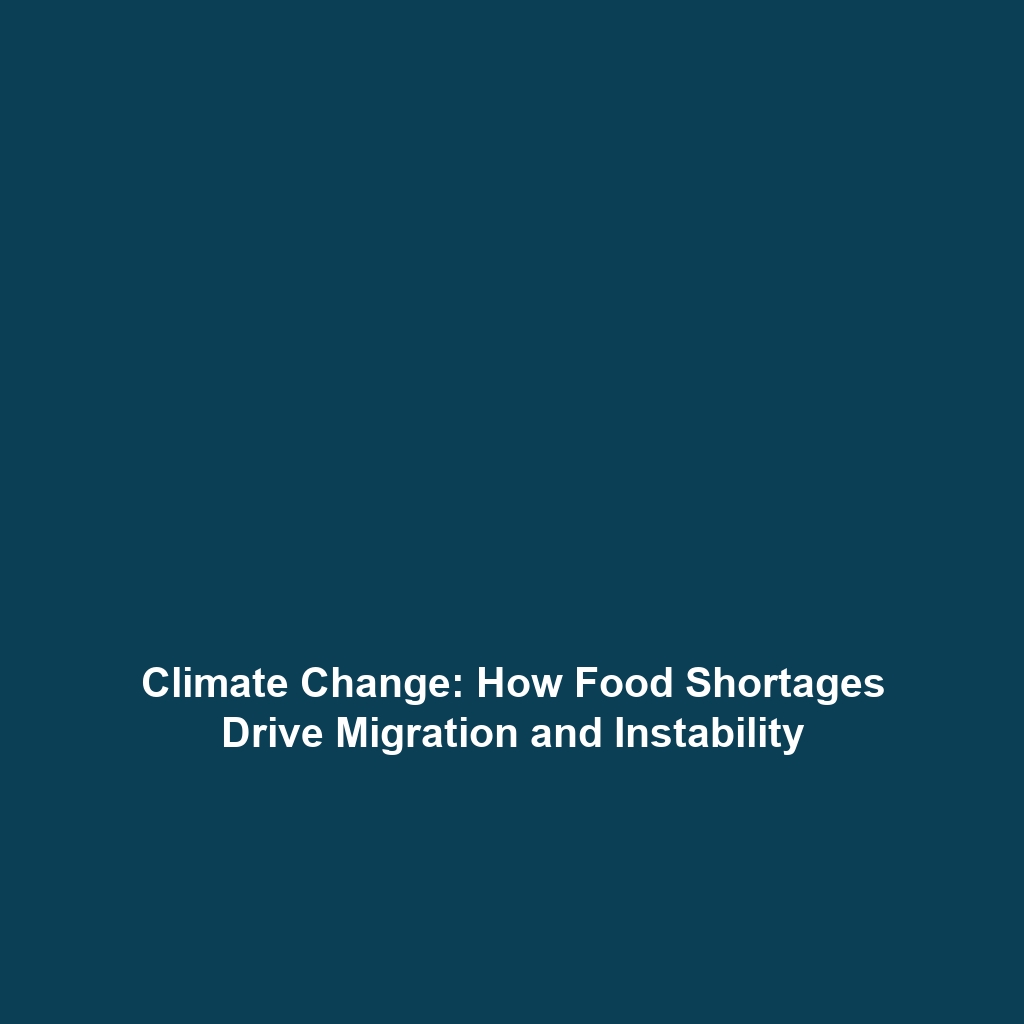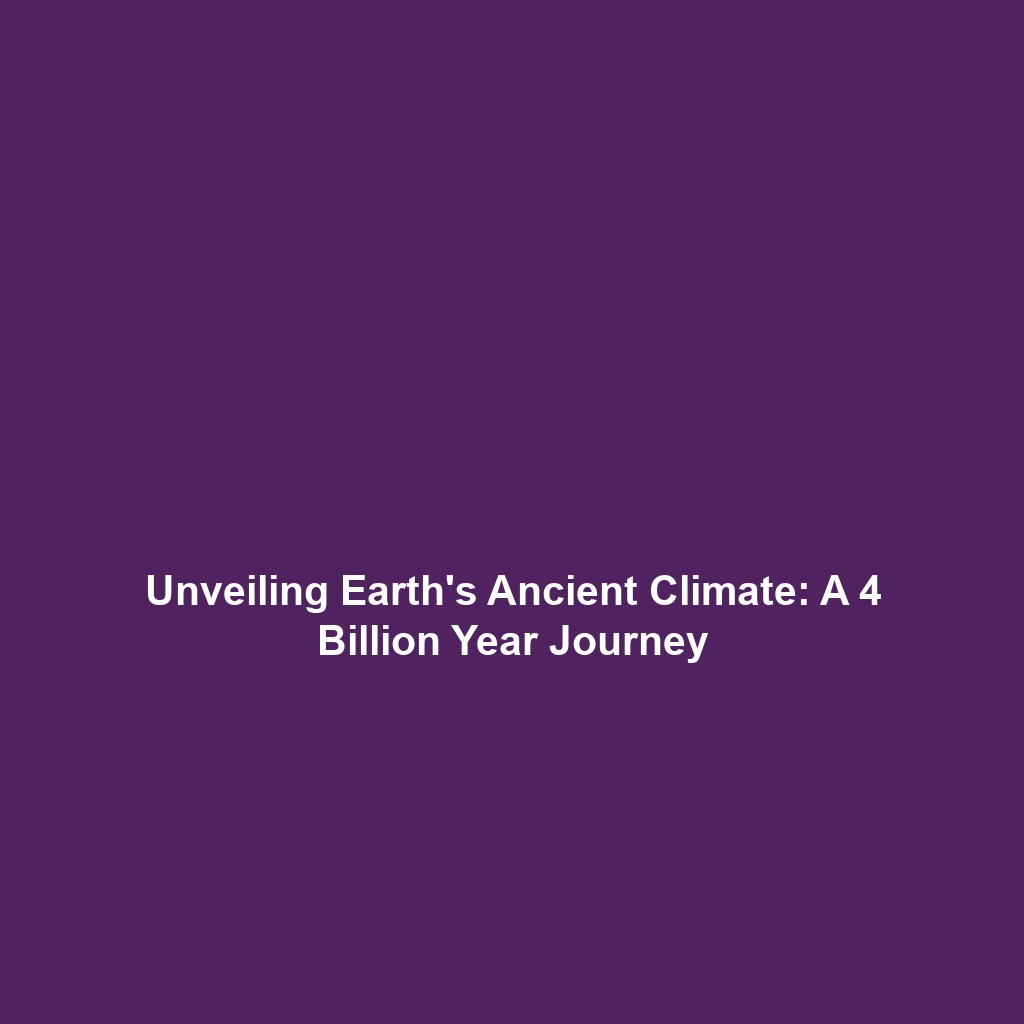How Deforestation and Biodiversity Loss Exacerbate Natural Disasters
Deforestation and biodiversity loss are emerging as critical factors contributing to the exacerbation of natural disasters, notably floods, droughts, and landslides. As forests rapidly disappear and ecosystems become increasingly fragile, we witness a disturbing link between environmental degradation and the frequency and intensity of these disasters. Understanding this relationship is pivotal for both environmental preservation and disaster mitigation strategies in the context of ongoing climate change.
Key Concepts
Deforestation refers to the large-scale removal of trees from forested areas, while biodiversity loss entails a decline in the variety and variability of life. Both concepts are intrinsically linked to various environmental problems:
- Soil Erosion: Trees play an essential role in maintaining the soil structure; their roots anchor soil, preventing erosion and landslides.
- Water Cycle Disruption: Forests contribute to local and regional hydrology, influencing rainfall patterns and water availability.
- Wildlife Habitats: Loss of biodiversity means fewer species to naturally regulate ecosystems, which can lead to unchecked pest populations and increased vulnerability to diseases.
Understanding how deforestation and biodiversity loss exacerbate these issues helps us appreciate their importance within the broader category of Deforestation & Biodiversity Loss.
Applications and Real-World Uses
Research and practices focusing on how deforestation and biodiversity loss are intertwined with natural disasters have significant real-world applications:
- Disaster Risk Assessment: Understanding local ecosystems can help predict flood and landslide risks effectively.
- Conservation Programs: Initiatives to conserve biodiversity and restore forests can help mitigate disaster impacts.
- Urban Planning: Incorporating green spaces in city designs to absorb rainfall can reduce flooding risks significantly.
These applications demonstrate how tackling the interconnected nature of deforestation and biodiversity loss can protect communities from natural disasters.
Current Challenges
Despite the evident connections between deforestation, biodiversity loss, and natural disasters, several challenges complicate the understanding and addressing of these issues:
- Data Availability: Limited data makes it difficult to gauge the full extent of biodiversity loss.
- Policy Gaps: Insufficient regulations at local, national, and international levels may impede effective environmental management.
- Public Awareness: A lack of education about the impacts of deforestation leaves many communities vulnerable.
Future Research and Innovations
Future research is focusing on innovative approaches to address how deforestation and biodiversity loss impact natural disasters. Key areas include:
- Satellite Monitoring: Utilizing remote sensing to monitor deforestation areas and biodiversity changes.
- AI and Machine Learning: Developing predictive models for disaster occurrences based on environmental data.
- Restoration Ecology: Advancing techniques for rehabilitating degraded ecosystems to restore their functionality.
Such innovations hold promise for improving disaster preparedness and response strategies, emphasizing the critical nexus of environmental health and human safety.
Conclusion
In conclusion, understanding how deforestation and biodiversity loss exacerbate natural disasters such as floods, droughts, and landslides is paramount for effective environmental and disaster management. By addressing these intertwined issues within the category of Deforestation & Biodiversity Loss, we can develop strategies to mitigate their impacts and promote sustained ecosystems and human well-being. As we move forward, it is vital to advocate for policies that support forest conservation and biodiversity enhancement.
For further reading on the impacts of environmental changes, check out our articles on climate resilience strategies and restoration ecology initiatives.


